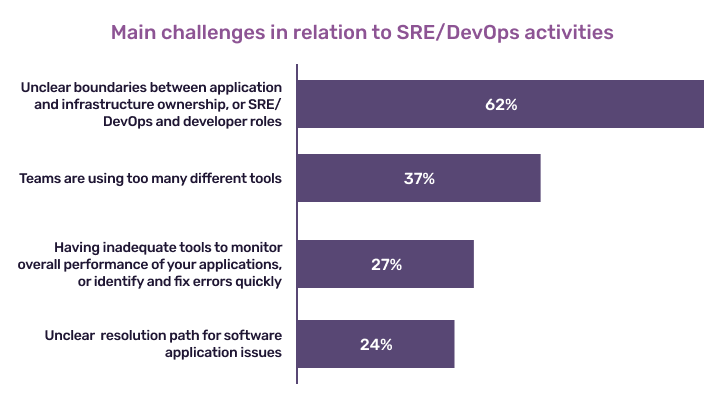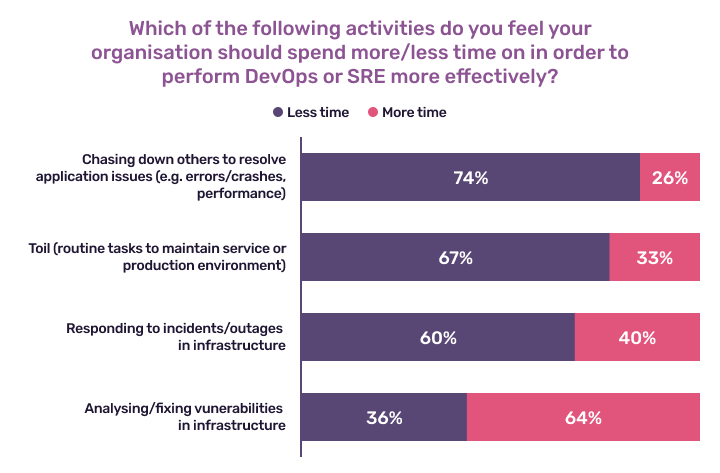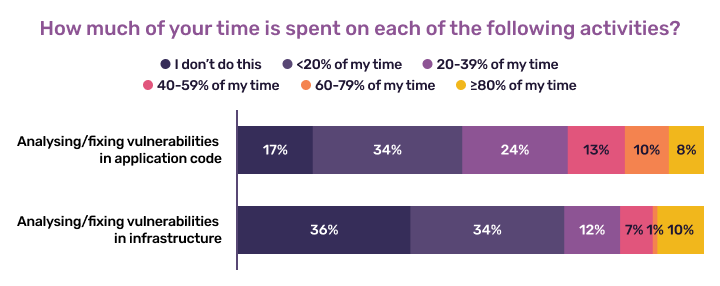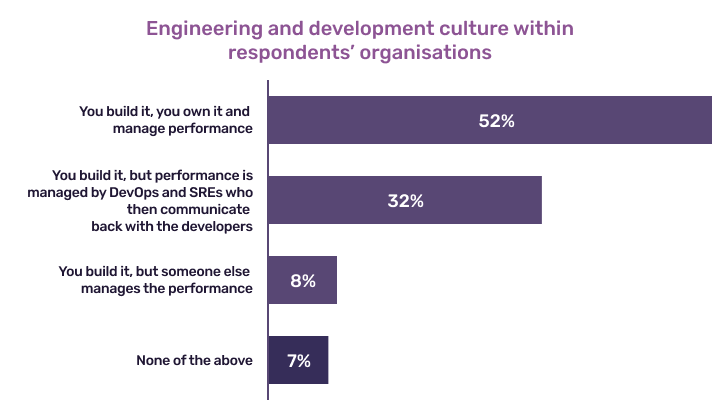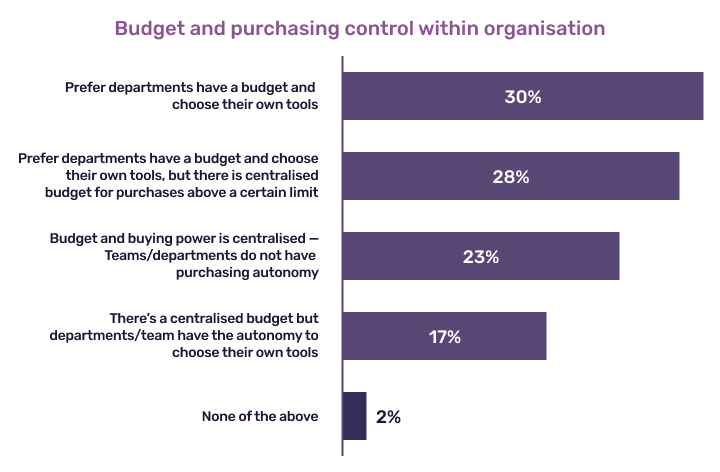Infrastructure vs Applications Report
When an application crashes or a page doesn’t load, whose job is it to fix it in your company? In many organizations, the onus is often put on operations or reliability teams — but is that how it should be?
In partnership with SlashData™, we surveyed more than 140 Site Reliability Engineers (SREs) and DevOps specialists to understand their biggest time-sinks, headaches, goals and the ownership dilemma when fixing their website, mobile or native app — when it inevitably breaks.
Decentralization of ownership — of code, tooling, budgets and more
Developers responsible for delivering software usually outnumber operations professionals by a factor of 10-to-1 or more, and the task of chasing down others to resolve application issues has become even more cumbersome than ever before. As more modern organizations adopt the You Build It, You Run It (YBIYRI) approach, the traditional model of DevOps and SRE teams managing all application issues will become outdated. If you wrote the code, shouldn’t you be the one to fix it?
We've highlighted a few of the key You Build It, You Run It insights below, but for the full set of supporting data and findings, download the Infrastructure vs Application Report.
Whose line is it anyways?
62% of respondents report that the most common challenge they face is the ownership dilemma between application vs infrastructure issues.
YBIYRI: Don’t make me chase you
The number one activity that SRE/DevOps specialists would like to spend less time doing is chasing down others to resolve application issues with 74% of respondents agreeing to this statement.
Time well spent?
SRE/DevOps specialists are more likely to spend time fixing application code than vulnerabilities in infrastructure – nearly 3 in 10 spend 40%+ of their time fixing application issues, compared to nearly 2 in 10 who spend 40%+ of their time on infrastructure.
Decentralization is the way to go
52% of SRE/DevOps specialists work in organizations where the engineering culture is You Build It, You Run It
58% of SRE/DevOps specialists would prefer that each department have the autonomy and control to choose the tooling that is right for their teams.

